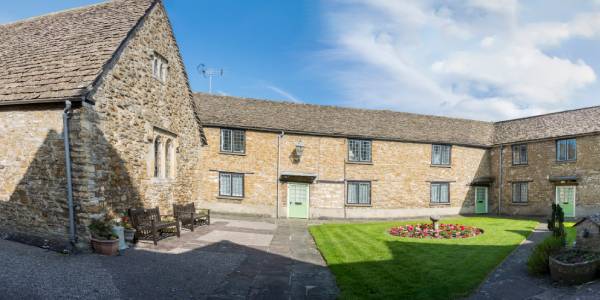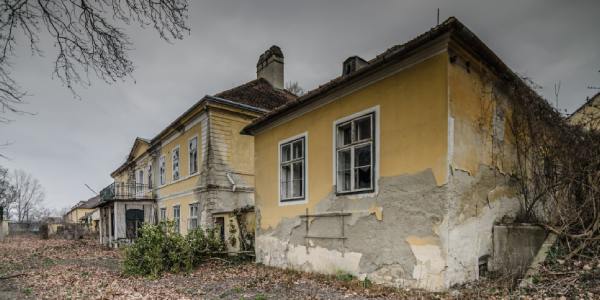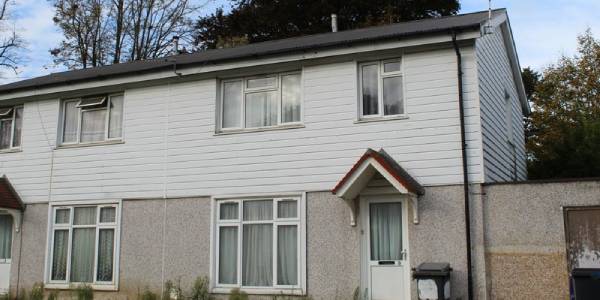A Guide To Property Surveys
When buying a property the mortgage lender will insist on inspecting the property before issuing you with a mortgage offer.
But many buyers want a more detailed survey of their intended purchase. Our guide explains what the different types of surveys are and how they work.

What is a survey?
A survey is a physical inspection and health check for a property carried out by a qualified professional
It should reveal any problems with the property you are intending to buy and provide an independent opinion on the agreed purchase price. This can include things like structural issues, damp, mould or rot.
If the survey highlights problems and you still wish to continue it can provide evidence for you to renegotiate the price with the vendor.
Do you need a survey?
Detailed property surveys aren’t compulsory so each buyer can make their own choices.
A survey can be viewed as an unwanted additional cost when buying a property is already expensive enough. However, a survey can cover it’s cost many times over if it reveals a structural issue with the property.
A survey can give you peace of mind that you’re buying a sound property and help you avoid any nasty surprises down the line.
If you buy a property using a mortgage then your lender will always want a condition report and valuation. Anything else more detailed or expansive will be up to you.
— There are 3 types of property survey —
Lender’s Valuation Report (Level 1)
A lender’s valuation is the cheapest and most basic type of property inspection. It is required by all mortgage lenders but it is not a survey.
This Level 1 valuation inspection (Condition Report) will pick up major defects but it’s primary purpose is to establish the current value of the property in relation to its condition and intended usage. The mortgage provider will want to know if the property is valuable enough to secure your loan against. This is a deciding factor in whether your mortgage application is approved.
The surveyor will assess the value of the property based on a number of factors, including its location, condition, size and amenities. They will also take into account any recent sales of similar properties in the area. The surveyor’s report will then be used by the lender to determine how much they’re willing to lend you.
In rare occasions the surveyor might spot something that needs fixing. Here the lender might put a mortgage retention clause into your mortgage offer. Basically lending you less than you asked for until the list of works has been completed.
Though you may pay for the report, you may not get a copy or even see what the surveyor has written. The valuation is based on the surveyor’s knowledge of comparable prices in the locality. It may also give a minimum reinstatement value, which is the amount of money it would take to completely rebuild the property, should it ever be necessary.
Your lender will arrange an inspection with a qualified surveyor who is approved by the lender to undertake this type of work.
Homebuyer’s Report (Level 2)
You can elect to have a Level 2 Homebuyer’s Report and this will be more expensive than the basic Level 1 valuation.
You can choose to use the lender’s Surveyor and ‘upgrade’ his inspection to include the elements of the Homebuyer’s Report or alternatively instruct another surveyor of your choice.
This survey is more detailed than a valuation for lending purposes and will include a report just for the borrowers on the state of the property. The homebuyer report will not list every single aspect of the property, but it can reveal problems which need further investigation. The report will include all major sections of a property that are visible to the surveyor. However, they will not lift up flooring or carpets and will be unable to inspect the wiring.
This the most popular type of house survey when moving home, and a sensible choice for properties that are in a reasonable condition.
We would suggest that this survey is not very appropriate for properties of a non-standard design or construction.
Our Moving Home Guide has more information on the moving process.
The Building Survey (Level 3)
Also known as a full structural survey it is the most extensive (and expensive) type of survey.
If the property you are buying is relatively new and in very good condition a Level 3 full structural survey may be a bit excessive and so a Level 2 Homebuyer’s may be more suitable.
However, if the property is quite old, has had major building work done or is structurally unsound we would always suggest the full building survey. These can be particularly helpful regarding the more unusual properties that occasionally need a specialist property mortgage:
- Non-standard construction
- Barn conversions
- Old pubs
- Castles
- Thatched cottages
- Disused churches
- Steel framed houses
- PRC concrete houses
It assesses the condition of the property from top to bottom, inside and out, and provides a detailed report on any defects or repair work that may be required. This type of survey is usually recommended for properties that are older or in need of major repairs, as it can provide invaluable information on potential problems that could otherwise be missed.
The surveyor will also assess the value of the property and provide an estimate of the cost of any necessary repairs. If you are considering purchasing a property that is in need of repair, a full survey is an essential tool in ensuring that you are fully informed about the condition of the property before making a purchase.
It is not unusual for the surveyor to spend a few hours inspecting the property depending on its size. They will look at all aspects of the property and will view the loft and check underneath floorboards if possible.
For pre 1930’s houses the lender may ask for a full building survey when there are questions concerning the external walls of the property. The surveyor will be asked to determine whether it is built using single skin solid walls, cavity walls, or perhaps both.
The Remortgage Survey
When you remortgage you move your mortgage to a new lender but stay in the same property.
As you live there already the new lender can be a bit more relaxed regarding the condition and value of the property.
It’s possible that they will send a surveyor to visit the property and take a look inside. However, it is also possible that they just use comparable property sales data to confirm an approximate value without needing to see the property.
This last option is sometimes referred to as a ‘desk top valuation’ or ‘virtual valuation’.
Our Guide to Remortgaging explains the process of changing mortgage lender.


The Snagging Survey
A snagging survey is there to spot problems with your new build home. It should be done before you move in and is usually carried out by a qualified ‘snagging’ surveyor. This is separate to any survey arranged through the mortgage lender.
The snagging survey will pick up on any issues that need to be rectified before you move in. These can be things like cracked tiles, faulty electrics, plumbing issues or doors that don’t close properly.
It’s important to get these problems fixed before you move in as they can cause all sorts of problems down the line. It can also be difficult to get the builder to come back and fix things once you’ve moved in.
While snagging surveys aren’t compulsory they are definitely worth considering. They can save you a lot of time and hassle getting things fixed before you move in.
Where it is not possible to arrange this prior to you moving in, try to get the snagging done within the first 2 months of occupancy.
If you do decide to get a snagging survey make sure you use a qualified professional. They will know what to look for and will be able to spot any potential problems.
CONTACT A MORTGAGE BROKER
If you are ready to take the next step then we can put you in touch with a fully qualified independent mortgage broker.
House survey fees
The cost of your survey will vary depending on the location, size and type of property.
For the Level 1 Valuation Report and Level 2 Homebuyer’s Report your mortgage broker will be able to confirm the costs.
Generally the Level 2 is done at the same time as the Level 1. This helps to cut the costs down and also means you will use the lenders nominated surveyor. You are free to choose your own Level 2 surveyor if you prefer but you will need to arrange this yourself.
For the Level 3 Building Survey you will need to approach different surveyors to compare their fees. Make sure you get a few quotes before deciding who to use.
Links
These links provide more information about RICS surveyors and the different property inspections.
Find a RICS surveyor
https://www.ricsfirms.com/
RICS Consumer Guide to Surveys
https://www.ricsfirms.com/residential/moving-home/surveys/
Should you pay for a survey?
There is no easy answer as to whether or not you should pay for a survey, beyond what the lender requires. It really depends on your personal circumstances and how risk adverse you are.
If you are buying a particularly old property or one that appears to have been neglected then it might be worth paying for a more detailed survey. This could uncover any serious problems that could end up costing you a lot of money to put right.
If the property is near a river or flood plain a detailed survey should be able to assess the risk from flooding, flood risk properties can be difficult to finance.
If you are buying a new build property then you might not feel the need for a survey as they should be covered by a warranty. However, it is always worth getting a second opinion from a qualified professional.
Buying a home is an expensive process but the cost of a Level 2 or Level 3 survey could be seen as a minor cost compared to the purchase cost of the property.
At the end of the day, it is up to you whether or not to have a survey. Weigh up the cost against the potential risks and make a decision that is right for you.
PS – (We recommend you at least consider the Level 2 if the property is not new).
FAQ
Frequently Asked Questions
Does a new build house need a survey?
A full survey is unlikely to provide any real value. However, a Level 2 Homebuyers Report and/or a professional snagging survey could be money well spent.
Can you choose the surveyor?
For a Level 2 Report you may be able to choose a particular firm, providing that they are acceptable to the lender. For a Level 3 full survey you are free to choose any individual or company.
Will the Homebuyers report include a valuation?
Sometimes. This will need to be discussed with the surveyor.
Can I use the report to renegotiate my offer?
Possibly. If the report highlights defects that were not previously known to you or something that has now caused the property value to drop then it can be used to negotiate a lower price.
What is RICS?
The Royal Institution of Chartered Surveyors (RICS) is a UK-based professional body for surveyors.
Do all mortgage lenders require surveys?
All lenders will need a valuation report as a minimum. This may be from a physical visit or a desktop valuation.
What’s a rural surveyor?
For certain types of property you will need a more specialist surveyor. A rural surveyor will be experienced in dealing with agricultural land and farms and could be useful if you need a smallholding mortgage.
How long does the survey take?
A mortgage valuation can take just 10-15 minutes while a full survey can take many hours depending on the extent of the property and buildings.
What’s a flying freehold?
A flying freehold means that part of the property extends over, or under, a neighbouring property. You will need a suitable lender who offers a flying freehold mortgage.






